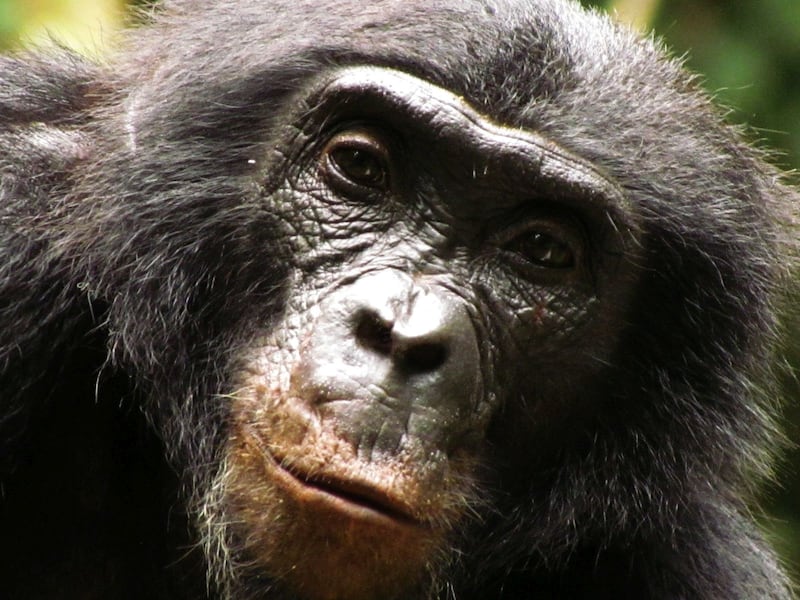Remote cameras have captured the distinct reactions of wild apes encountering the unusual objects.
While chimpanzees seemed unfazed by the camera traps, gorillas and bonobos were more likely to show a response, a study has found.
Bonobos, found in the Democratic Republic of Congo, appeared to be the most tentative around the new objects.
The apes poked at them, stared at them, and tried to bite them, but responses varied between species and individuals.
The researchers said their novel reactions suggest scientists should allow wild animals the time to get used to cameras before beginning to collect data.
The responses of 43 groups of naive chimpanzees, bonobos, and western gorillas to remote camera-trap devices, across 14 field sites in Africa, were analysed for the study.
Dr Ammie Kalan, a primatologist at the Max Planck Institute for Evolutionary Anthropology in Germany, said they were particularly surprised by the different reactions of chimps and bonobos.
“Since they’re sister species and share a lot of the same genetic makeup, we expected them to react similarly to the camera, but this wasn’t the case,” she said.
“The chimpanzees were overall uninterested in the camera traps – they barely seemed to notice their presence and were generally unbothered by them.
“Yet the bonobos appeared to be much more troubled by camera traps, they were hesitant to approach and would actively keep their distance from them.”
Among all three species, apes looked at the camera longer when they were younger, interacted with fewer animals, or did not live near human activity.

“Like human children, they need to take in more information and learn about their environment. Being curious is one way of doing that,” Dr Kalan said.
The researchers said camera-traps are a useful way of monitoring a large number of animal groups, but should perhaps be used with care.
“The within and between species variation in behaviour towards the unfamiliar items might be problematic when trying to collect accurate monitoring data,” Dr Kalan said.
“To curb this effect, it would be worth having a familiarisation period, where the wild animals can get used to the new items.”
The research has been published in journal Current Biology.








